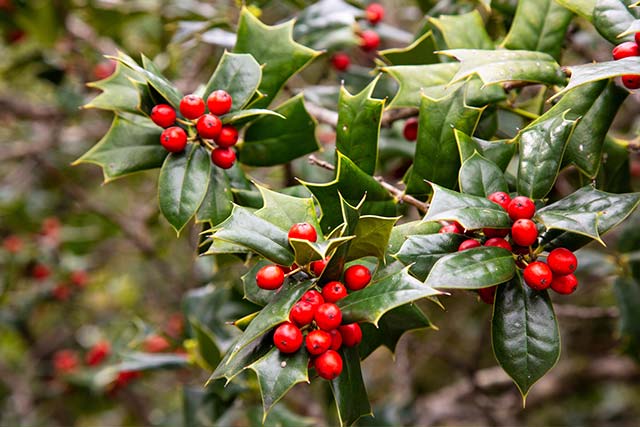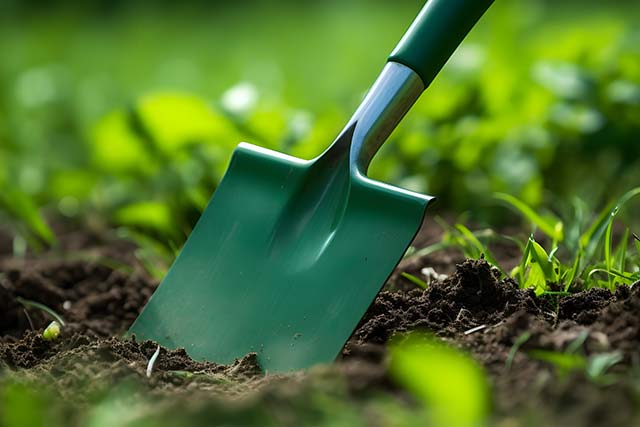Holly Hedges, also known as Ilex Aquifolium is an attractive, native evergreen hedging plant that produces attractive red berries and makes a great intruder barrier. It is commonly found in woodland areas and gardens, adding vibrant colour to their surroundings.
Holly hedges are a popular hedging plant due to their dense growth habit, making them ideal for creating privacy in your garden. They also provide year-round interest with their glossy dark green leaves and bright red berries that last well into winter.
Choose from our most popular varieties of Holly Hedging plants, available in a range of sizes and root types.
English Holly is an attractive, native evergreen hedging plant with spiky glossy green foliage and produces white flowers in the spring.
Growth rate: Slow 10-20cm per year
Overall height: Small up to 3 metres
Position: Sheltered, Full Sun, Full Shade
Root Types: Instant Hedging, Pot Grown, Root Balled
Our team are on hand to help answer your questions!
info@hedgingplantsdirect.co.uk
Opening times
Monday - Friday : 7:30am - 4:30pm
Saturday & Sunday: 10am - 2pm
We are also open 10am to 2pm on bank holidays
Holly hedge, scientifically known as Ilex Aquifolium, are a quintessential part of the British landscape.
Revered for their lush green foliage and radiant red berries that adorn the shrubs during the chilly winter months, these native evergreen hedging plants not only add a vibrant hue to the gardens but also serve as an effective barrier with their spiky leaves.
Their dense growth habit ensures privacy, making them a popular choice amongst gardening enthusiasts. As you delve into the world of holly hedging, you will discover a variety of species each with its unique characteristics and growth patterns.
This guide aims to provide insights into the fascinating world of holly hedges, from their growth rate to positioning and overall care.
Holly hedge grows at a rate of 10-20cm per year, making it a slow-growing plant. While this might mean that it takes longer to establish a dense hedge, the wait is worth it for the attractive and long-lasting results.

Holly are available as instant hedging, bare root and pot grown plants, each with their own advantages.

Root balled holly hedge plants refer to hollies that have been field-grown and then lifted with a ball of soil around their roots.
This method ensures the plant maintains its root structure, promoting better establishment when transplanted.
Root ball hollies can be planted during the autumn and spring months when the plant is dormant, providing an environment-friendly and cost-effective hedging solution.

Pot Grown Holly Ilex aquifolium offer a flexible planting option. Being sold year-round, they're ideal for gardeners who wish to plant outside the typical planting season.
They are pre-grown in pots, establishing a robust root system, which leads to a higher success rate upon replanting. They can be easily placed into pre-dug holes and require minimal care post-planting.
The main advantage is their versatility and convenience. However, pot grown hedge plants are typically a bit more expensive than their bare root counterparts.

Instant Holly Hedges provide an immediate privacy solution. They are mature plants that have been pre-grown into hedge panels, offering instant establishment upon planting.
These are ideal for those seeking immediate results, as they instantly form a dense hedge with their evergreen foliage.
Despite their higher cost, the immediate effect and time saved in waiting for growth makes them a popular choice.

When planting holly hedges, choose a sheltered spot with well-draining soil. It can tolerate both full sun and full shade, making it versatile in terms of positioning. Water thoroughly after planting and provide regular watering during dry spells in the first year of growth.
For a step by step process and further information on how to plant holly hedges, please see our comprehensive hedge planting guide.
The best time time to plant Holly Hedges is between late autumn and early spring, when the plant is dormant. This will give them time to establish their root system before the growing season begins.

The distance between each English Holly plant depends on the root type and size of the plant.
Please refer to our Holly Hedge spacing chart below which contains the correct planting spacing and distances for each root type and plant size.
English Holly Hedges flourish in a variety of soil types including clay, loamy, moist or normal soil. The significant factor to consider is that the soil must have good drainage as they do not tolerate waterlogged conditions.
They can grow in acidic, neutral, and alkaline pH. Regardless of the soil type, enriching the planting site with organic matter can promote healthier and more vigorous growth.
As for the planting position, Holly Hedges are versatile and can thrive in both full sun and full shade. However, a position that receives partial sunlight is considered optimal.
These plants can also withstand exposed and sheltered sites, making them a resilient choice for numerous garden conditions.
Next up in our guide, we're going to look at pruning tips for Holly Hedging Plants. It's crucial to keep your holly hedging well-maintained to ensure it thrives and continues to provide a stunning visual impact and practical function in your garden.
Pruning is an important aspect of this process. This section will provide you with expert advice on when and how to prune your holly hedges to ensure optimal health and growth.
The best time to prune a Holly hedge is in late summer or early autumn. This will give the plant enough time to heal before cold weather sets in.
When pruning an English Holly hedge, start by removing damaged, diseased or crossing branches.
Then, lightly trim back the remaining growth, making sure to maintain the desired shape and size of the hedge.
Avoid cutting into old wood, as this can affect the plant's ability to produce berries.
Regular watering and appropriate fertilisation are key to the healthy growth of Holly Hedging. After planting, ensure the hedges are watered thoroughly, especially during dry periods in the first year.
Ensuring the ground is neither waterlogged nor dry is crucial for the holly's development.
As for fertilising, an application of a slow-release, balanced fertiliser in spring can stimulate growth and promote overall plant health.
However, avoid over-fertilising as it could lead to excessive growth and fewer berries. Remember, incorporating a good amount of organic matter to the planting site can also naturally enrich the soil, reducing the need for additional fertilisers.
The best species of holly for a hedge is typically the English Holly, also known as Ilex aquifolium. It is renowned for its glossy, green leaves and bright red berries, which provide a striking contrast and visual appeal during the winter months.
Moreover, its dense growth habit makes it an excellent option for privacy hedges. English Holly is adaptable to a wide range of soil types and conditions with its hardy nature, further enhancing its suitability for hedge planting.
Yes, English Holly Hedges are indeed evergreen. This means they retain their lush, green leaves throughout the year, providing a constant display of foliage.
This characteristic is particularly beneficial for those seeking a hedge that offers year-round privacy and a consistent aesthetic appeal.
The vibrant red berries that Holly Ilex aquifolium hedges produce in the winter further enhance their appearance, making them a popular choice for gardeners across the globe.